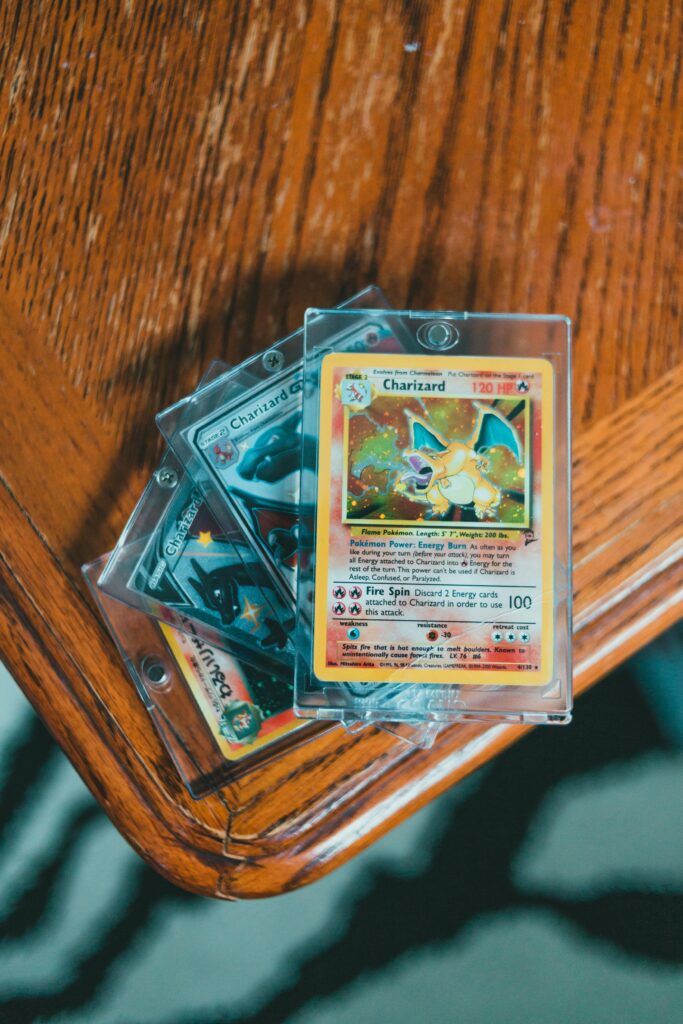So you’re starting your Pokémon card journey, and guess what? Terms and lingo are your new best friends. Navigating this world means understanding the common language, which can unlock a richer experience and more effective trading and playing.
Getting these terms down isn’t just for the sake of trivia—it’s your passport to becoming a savvy Pokémon trainer. When you know your PokeBase from your PokePower, you’re gonna make more informed choices both in deck-building and in trades with fellow enthusiasts.
Let’s break down the big ones. You’ve got the names of different card types like “Basic” and “Stage 1.” Then, there’s rarity, which can mean the difference between having a basic card or a legit collector’s item. Not to mention condition terms that tell you how well a card’s been maintained.
Each term fits into one of several categories that shape your overall card experience. Whether we’re talking about card types, rarity, condition, or gameplay, these words set the stage for everything you do with Pokémon cards. Welcome to the adventure with eyes wide open, ready to explore the endless possibilities this game world offers.
Delving into Card Types and Attributes
The universe of Pokémon cards is as diverse as it is captivating, with card types being one of the most thrilling aspects. Understanding card types not only enhances gameplay but also breathes life into your collection. Whether it’s a Basic Pokémon or a mighty GX, each card type has its own role.
So what’s the deal with these card types? Basic Pokémon kick things off, forming the foundation of your deck. Then come Stage 1 and Stage 2 cards, packing more punch and evolving your gameplay strategy. EX, GX, and the powerhouse VMAX cards up the ante with special abilities and higher HP.
Speaking of HP and abilities, every card comes with its own set of attributes to pay attention to. HP determines how long your Pokémon stays in play, while Energy Types guide how they attack. Then there’s the attack rating, showing the power your card brings against opponents.
Each card type and its attributes drastically impact your strategy in the game. Whether you’re building your deck or engaging in a heated battle, knowing the ins and outs of card types and attributes is a game-changer. This understanding not only improves how you play but also gives you a strategic edge.
Navigating Rarity and Condition Terms
Rarity plays a huge role in the world of Pokémon cards. It’s like the golden ticket that differentiates the everyday from the extraordinary. From Common to Rare and beyond, each level holds its own weight in trading and collecting.
Rarity isn’t just about the thrill of the chase; it’s a marker of a card’s value and sometimes even its playability. Common cards are plentiful and great for beginners, while Rare and Super Rare might just be those game-changers you need.
Condition is another story entirely. Terms like Mint, Near Mint, and Excellent are part of this essential vocabulary. They tell you how well a card has been cared for over its lifespan. A card in Mint condition? That’s what every collector wants to find.
Why do condition terms matter so much? Well, they’re crucial when you’re evaluating a card’s worth or haggling for a trade. Seasoned collectors know that a Mint card can command a much higher price than one that’s just in Good condition.
Real finesse in collecting and trading comes from a clear understanding of both rarity and condition. Knowing what makes a card rare and how its condition affects its value can make all the difference in building a collection that not only looks great but holds its value.
Gameplay Dynamics: Crucial Terms Every Player Should Know
In the heat of a Pokémon battle, knowing key gameplay terms can be your secret weapon. These terms form the foundation for any tactical play, and mastering them can give you a competitive edge.
Retreat Cost, Weakness, and Resistance are a few you don’t want to overlook. Retreat Cost is what you’ll owe to get your Pokémon out of a sticky situation. Weakness refers to vulnerabilities your Pokémon may have against certain opponents, while Resistance offers a handy buffer against specific attacks.
Trainer Cards, Stadiums, and Tools add layers to your strategy. Trainer Cards can give your gameplay a tweak with special effects. Stadiums bring a unique environment impact to the game, potentially changing the course of play. Tools enhance your Pokémon in various ways, adding to your strategic options.
Understanding these gameplay terms isn’t about collecting trivia; it’s about elevating your entire experience. Each term has the power to influence how you play, whether you’re planning a bright opening move or crafting an endgame strategy.
Solid knowledge of these dynamics is your ticket to refined tactics and more strategic plays. When you know the rules and leverage these terms, every match becomes a platform to showcase your skills and creativity.

